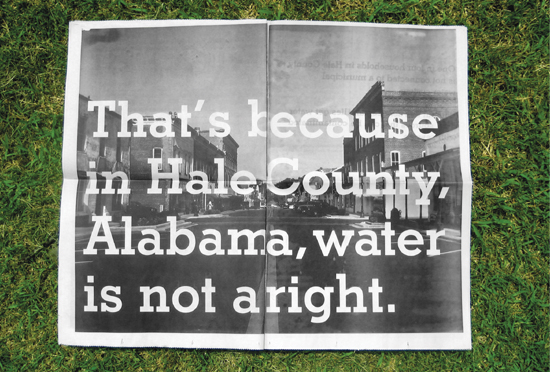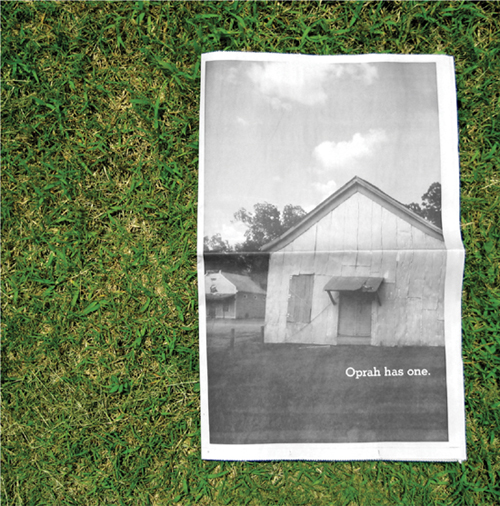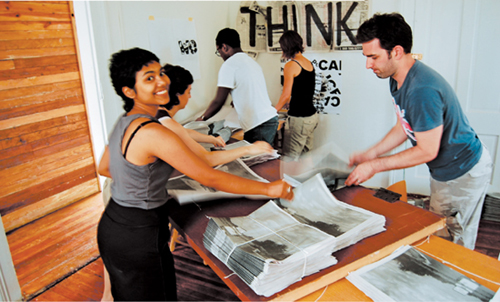COLLABORATIVE GROUPS OF DIVERSE PEOPLE WILL TRUMP AN INDIVIDUAL MIND IN CONSISTENTLY GENERATING A WIDE RANGE OF BIG IDEAS AND CREATIVE SOLUTIONS TO A PROBLEM.
My own “pure ideas” almost always come from a group process similar to what I use at Project M and MavLab. I believe that, properly managed, collaborative groups of diverse people will trump an individual mind in consistently generating a wide range of big ideas and creative solutions to a problem. We call this process “thinking wrong.”
I recently read an article in The New Yorker magazine called “The Aha Moment” that tried to explain why new ideas often come when people are doing things such as taking showers or walking on the beach. They discovered that big new ideas often occur when you park a problem to be solved in your brain and then stop actively trying to solve it. When you engage in a “mindless” activity such as running, your brain is actually still processing between hemispheres, making connections that would not happen while you’re sitting at a desk concentrating. I find this to be true for me, too.
I rarely write inspirations down in a personal sketchbook, although I often think I should. However, when we run our “think wrong” sessions with groups, we do write ideas down on those big, white, sticky sheets pasted to the wall.
I really don’t care where big ideas come from. Aside from legal copyright infringement, who the hell cares? For me, it’s all about the ability of the idea to solve the problem in a legendary way. I think the debate about originality is a colossal waste of time.
The term graphic design makes me squirm. I’m mostly interested in design as ideas rather than as craft or discipline. There’s nothing wrong with craft, but it’s kind of like designing tread patterns on tires, rather than driving the car. I’m inspired by big-idea people such as Bucky Fuller and Charles Eames.
In June 2007, I was in rural Alabama with a team of seven young Project M designers. While we were in Hale County, we discovered that 1,000 out of 4,000 households did not have access to fresh water. They either were on shallow, contaminated wells or didn’t have any water hookup at all. We decided to do a campaign to buy water meters and get as many people hooked up to the public system as possible. The cost for this was approximately $425 (£259) per house.
We had two big ideas. One was that almost everyone in the United States has a water meter and takes it for granted. This resulted in the “Oprah Has One” direct mail newspaper.
The second big idea was to print simple white T-shirts with “425” on the front and sell them for $425 (£259). The 425 T-shirt came directly from insight that Brian Collins stated during his visit to Project M. Wealthy people have a strong and insatiable desire to consume and to pacify their guilt at the same time.
I get inspired by tight deadlines. I remember one late, pressure-filled night when we were putting photos and copy together and thinking that we were really on to something powerful. I think the fact that we were under some severe time constraints helped the process. It was do or die with less than one week to go.
Along the way, we tried lots of things that didn’t work. Thinking wrong is about generating as many solutions as humanly possible before selecting and executing the best one. One of the techniques we use is called the random word exercise. Each small team picks two numbers. The first number is the page of a dictionary and the second number determines the word by counting down that number of words from the top of the page. This generates a random word or phrase, such as “pig-nosed slimefish,” that they use as the starting point for idea generation. Buy-a-Meter campaign ideas that start with pig-nosed slimefish will be very different and original compared to what you’d get from a conventional brainstorming session. Sometimes, the ideas are ridiculous, but there is almost always something brilliant that we would have never considered without using this process.
The experience with Project M continues to reinforce the idea that thinking wrong is always useful during the idea-generation phase of a project and that groups of diverse creative people can come up with more good ideas than any individual can. I also believe that once you have a big idea, the execution is usually better with a small core team or individual.


 PROJECT
PROJECT


